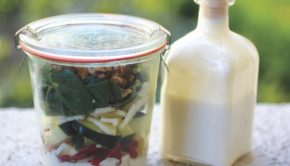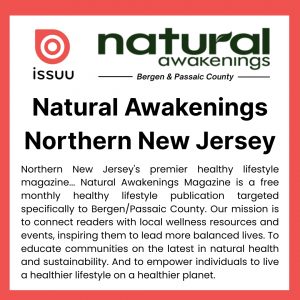Something To Smile About: A Look at Non-Toxic Dental Products
With a plethora of products on the shelves promising snow-white smiles and stronger teeth, it is tricky deciding which ones are reliable and the least toxic. For example, antimicrobial mouthwashes, especially those with chlorhexidine, have prompted scientific investigation into possible correlations between their use and cardiovascular disease, oral cancer and other conditions. While there is no conclusive evidence that popular mouth rinses are helpful or harmful, it is something to consider when it comes to dental hygiene regimens.
“It’s an exciting time for natural dental care, and these trends are paving the way for healthier, more conscious oral care routines,” says Trina Felber, a clean-beauty coach and founder of Primal Life Organics. With cutting-edge alternatives like nano-hydroxyapatite replacing controversial fluoride, cleansing agents designed to promote beneficial bacteria, and LED light therapy for gum health and tooth whitening, mouth-care has a bright future.
Remineralizing Teeth Without Risks
Pharmaceutical-grade fluoride, an ionized form of fluorine, has long been touted as a cavity preventative, counteracting acidic conditions in the mouth and remineralizing the teeth. Concerns, including cognitive deficits in children due to exposure to high levels of fluoride, may be enough to rethink its presence in oral care products and dental applications, especially in areas where sodium fluoride, a chemical byproduct of aluminum, steel and cement manufacturing, is added to drinking water.
“Hydroxyapatite toothpastes are gaining a lot of attention these days as people search for effective alternatives to fluoride to help strengthen and remineralize their teeth,” says naturopathic physician Shawn Manske, assistant director of clinical education at Biocidin Botanicals. “What makes hydroxyapatite so promising is that it is naturally nontoxic and bioactive. Your teeth are made of the same minerals that comprise hydroxyapatite, which your body readily recognizes and uses to repair thinning or damaged tooth enamel. Nano-hydroxyapatite [in toothpaste], because of its much smaller particle size, can penetrate deep within the tooth, helping to remineralize from within.”
Felber highlights the gaining popularity of nano-hydroxyapatite, as well as other enamel-supportive ingredients such as bentonite, kaolin and French green clays, “which naturally protect enamel without the potential downsides of fluoride,” although no studies have confirmed the clays’ ability to remineralize teeth.
Manske points out that nano-hydroxyapatite products on the market today, including toothpastes, are made using a synthetically produced ingredient “because there is currently no natural nano-hydroxyapatite on Earth. However, the synthetic nano-hydroxyapatite is considered biocompatible with the hydroxyapatite naturally found in teeth—meaning not harmful to living tissue—and research demonstrates its effectiveness.”
Natural Whiteners and the Oral Ecosystem
We all want whiter teeth, but popular over-the-counter whiteners are gaining attention as enamel compromisers. A 2019 assessment conducted by the Danish Environmental Protection Agency and research published in British Dental Journal show that the common ingredients sodium chlorite and citric acid in whitening trays, pens and strips might lead to the destruction of enamel and hardness in the teeth. The Danish assessment also warned against the use of whitening products containing more than 0.1 percent hydrogen peroxide.
“LED light teeth-whitening systems are gaining traction, including toothbrushes with built-in LED light technology. These systems use blue LED light combined with a natural whitening gel to break down stains without the harsh chemicals that can weaken enamel or cause sensitivity,” explains Felber, adding that LED light therapy is a powerful tool for healthier gums, too. “Red light therapy helps to reduce inflammation, promote tissue healing and stimulate collagen production in the gums, while blue light targets harmful bacteria that cause gum disease, all without disrupting the oral microbiome.”
A healthy oral microbiome plays a vital role in producing nitric oxide, a molecule essential for maintaining cardiovascular health, improving blood flow and supporting immune function. Felber underscores the importance of using natural dental-care products to support this delicate microbiome.
Manske notes, “Many commonly used mouthwashes can harm your oral microbiome, upsetting the balance of beneficial bacteria in your mouth. Essentially, what these mouthwashes do is wipe out the good bugs with the bad. This creates a state of dysbiosis, which can lead to oral health concerns later.”
Some toothpaste (including the toothpaste tube) and toothbrushes may contain ingredients that disrupt human hormones, such as triclosan (an antibacterial), parabens (a group of preservatives), phthalates (chemicals that make plastic flexible), sodium lauryl sulfate (chemicals that produce a foaming action) and artificial sweeteners. As a result, more companies are going green by producing toothpaste tablets that come in glass or paper packaging and bamboo toothbrushes. “These biodegradable toothbrushes reduce plastic waste and are a great option for anyone looking to make their oral care routine more sustainable,” says Felber.





























